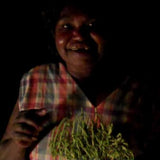Paintings
Exhibitions
Subscribe to receive your exclusive preview of exhibitions prior to opening.
You will be able to view and purchase exhibition artworks before they go live.

Past Exhibitions
Subscribe to receive your exclusive preview of exhibitions prior to opening.
You will be able to view and purchase exhibition artworks before they go live.
Subscribe
Collections
Artists
About the Artists
Our vibrant and dynamic artists are from the Utopia region; a large remote area of Central Australia which, until recently, had no government funded art centre. As a result of their pioneering efforts, they have one of the strongest and richest art histories.

Explore More Artist Bio's >
About the Artists
Our vibrant and dynamic artists are from the Utopia region; a large remote area of Central Australia which, until recently, had no government funded art centre. As a result of their pioneering efforts, they have one of the strongest and richest art histories.
Alpar-Samen
About Alpar-Samen



Alpar (Rattenschwanzpflanze) Samengeschichte
Ilkawerne-Land
Alpar ist das Anmatyerre-Wort für den Rattenschwanz-Gänsefuß oder die grüne Krümelkrautpflanze ( Dysphania kalpari ). Dieses kleine, aufrechte Kraut fühlt sich klebrig an und duftet stark nach Zitrusfrüchten. Sie gedeiht besonders gut in Mulga-Baumgemeinschaften und kommt im südlichen Utopia, nordöstlich von Alice Springs, in Hülle und Fülle vor. Sie produziert kleine Blütenbüschel, die lange Ähren bilden, die denen eines Rattenschwanzes ähneln, sowie kleine, schwarz glänzende Samen. Diese Samen sind reich an Eiweiß und arm an Ballaststoffen. Aufgrund der klebrigen Natur dieser Pflanze werden die Samen nicht sofort nach der Reife abgeworfen, sodass sie viel später in der Saison verfügbar sind als die meisten anderen Pflanzen.
Früher sammelten die Frauen des Ilkawerne-Landes diese Samen, legten sie manchmal in Wasser, bis sie aufquollen, oder kochten sie in heißen Kohlen und mahlten sie dann zu einem Pulver, das zur Herstellung von Damper (Brot) verwendet wurde. Aufgrund des Fertigbrots ist dieser Brauch heute nicht mehr so üblich, die Geschichte wird jedoch kontinuierlich den Jüngeren beigebracht und es werden Zeremonien abgehalten, um ihre Produktivität sicherzustellen.
Die duftenden Blätter von Alpar wurden ebenfalls gesammelt, in Wasser eingeweicht und als medizinisches Waschmittel verwendet. Alternativ würden sie zu einem Pulver gemahlen und mit tierischen Fetten gemischt, um sie als Salbe zu verwenden, was diese Pflanze zu einer sehr wichtigen Nahrungs- und Heilquelle macht.
Abgebildet ist June Bird Ngale aus dem Ilkawerne-Land, der über die Alpar spricht. Es war sehr spät auf einer Reise nach Utopia, als dies aufgenommen wurde. Ich wollte etwas Alpar zurückbringen, um es in der Galerie auszustellen, und June war so glücklich, uns davon zu erzählen. Das war vor einigen Jahren, als es in Zentralaustralien so viel Regen gab und Alpar in Süd-Utopia stark wuchs. Es hat einen starken Zitrusduft, der kaum zu übersehen war.
utopia lane

Subscribe to our VIP group for new arrivals, exhibition previews + special features ♥













